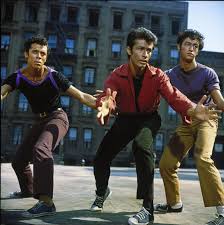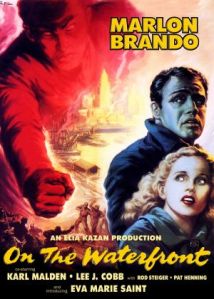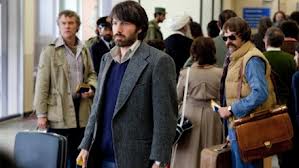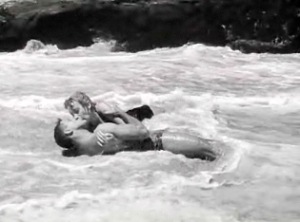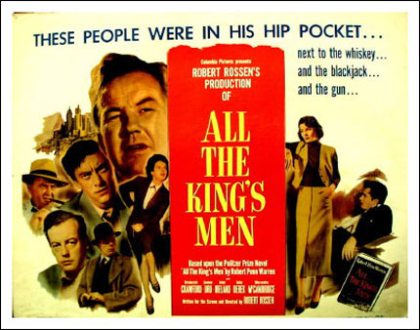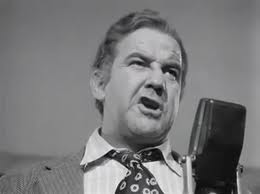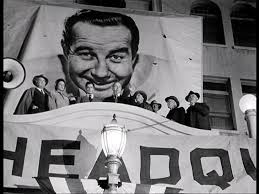I’ve just kissed a girl named Maria,
And suddenly I’ve found
How wonderful a sound
Can be!
Maria! – Tony, West Side Story
West Side Story, 1961’s Best Picture, is a much-loved, but fairly ridiculous movie. I mean that in a nice way because I really did enjoy watching this movie and hummed several of the songs for days afterwards, but, alas, this is a movie that has not aged very well. The fully bonefied love-child of the Hollywood Musical and the Socially Conscious picture (thus making it the very perfect Best Picture winner of its time), West Side Story, a modernized retelling of Romeo and Juliette blended with troubled youth hysteria and Broadway glitz, seems like it might have been shocking by the standards of 1961. But today, watching tough guys pirouette through the streets in menacing fashion all feels rather silly.

Tony (Richard Beymer) and Maria (Natalie Wood), the modern day Romeo and Juliet, sing “Tonight” on the aforementioned fire escape
In a hardscrabble patch of contemporary New York City, the Jets, a teen gang of nogoodniks run the streets but are facing encroachment from a Puerto Rican gang, the Sharks. Tony (Richard Beymer) is a Jets founder who has left the gang for the upward mobile career path of candy store clerk, but is implored by current leader Riff (Russ Tamblyn) to help set the terms for a “rumble” to establish supremacy between the Jets and Sharks. At the local youth center dance (a neutral ground the gangs use for the negotiations), Tony immediately falls in love with Maria (Natalie Wood), the sister of Sharks’ leader Bernardo (George Chakiris). Awkward. Overcome with love, Maria makes Tony promise to stop the rumble all together, but when Tony tries, a simple fist fight turns into a knife fight and both Riff and Bernardo are killed (Bernardo by Tony, in fact. Doubly Awkward.). Tony and Maria decide to run away together but are separated first. When Tony believes Maria has been killed, he walks through the streets demanding the Sharks kill him. He finally finds Maria alive but is shot as he runs to her and dies. Maria chides both sides for their endless cycle of violence and both gangs carry off Tony’s body.
A lot of fun has been poked at West Side Story over the years. Anytime gangs snap their fingers in menacing form or have impressively choreographed tough guy walks (even Michael Jackson’s “Beat It” video pays homage to the knife fight), those parodies are springing from West Side Story. The fight scenes are some of the most ridiculous, choreographed nonsense ever put on celluloid. But there are also a lot of affecting parts to West Side Story. The central love story between Tony and Maria in particular is moving, and their all-encompassing young love captures the same manic enrapture of Shakespeare’s inspirational lovers.
The movie’s songs are pretty stupendous and several – “I Feel Pretty”, “Maria”, “In America” – have become standards and the movie provides appropriate dance numbers to match. Natalie Wood is a very good actress most of the time, but her Puerto Rican accent borders on embarrassing in parts. Neither Wood nor Beymer sang their own songs in this movie, and even though it was standard Hollywood practice at the time (and will show up again in a future Best Picture) it still feels like something of a cheat.
The movie’s central theme is muddled between a plea for racial tolerance and a plea to “fix” troubled youth and often both are explained with dialogue that’s a little too on-the-nose. In one groaner of an exchange a shopkeeper asks the Jets: “When do you kids stop? You make this world lousy!” to which a Jet replies “We didn’t make (the world), Doc.” In fact, the Jets have a whole song about how the buck for their problems keeps getting passed around. Later, when Maria is verbally berating both Jets and Sharks she screams “All of you! You all killed him! And my brother, and Riff. Not with bullets, or guns, with hate,” which certainly doesn’t lack or subtlety.
I don’t mean to tear West Side Story down because I really did like it for the most part, but there is a very square quality to this movie. It’s essentially the guy who thinks he’s the coolest in the room but everything has moved on and now he just seems over-the-hill. See it for the romance and the songs, but be warned you’re also getting some unintentional comedy.
Other Oscar Wins: Best Supporting Actor (George Chakiris)*; Best Supporting Actress (Rita Moreno); Art Direction*; Cinematography; Costume Design; Director (Robert Wise and Jerome Robbins); Editing; Original Score; Sound
Other Notable Movies of 1961: Fanny*; The Guns of Navarone*; The Hustler*; Judgment at Nuremburg*; The Parent Trap; The Absent Minded Professor; El Cid; La Dolce Vita; 101 Dalmatians; Splendor in the Grass; Breakfast at Tiffany’s; The Misfits
*Best Picture Nominee
Box Office: $43 Million (#1 for the year)

